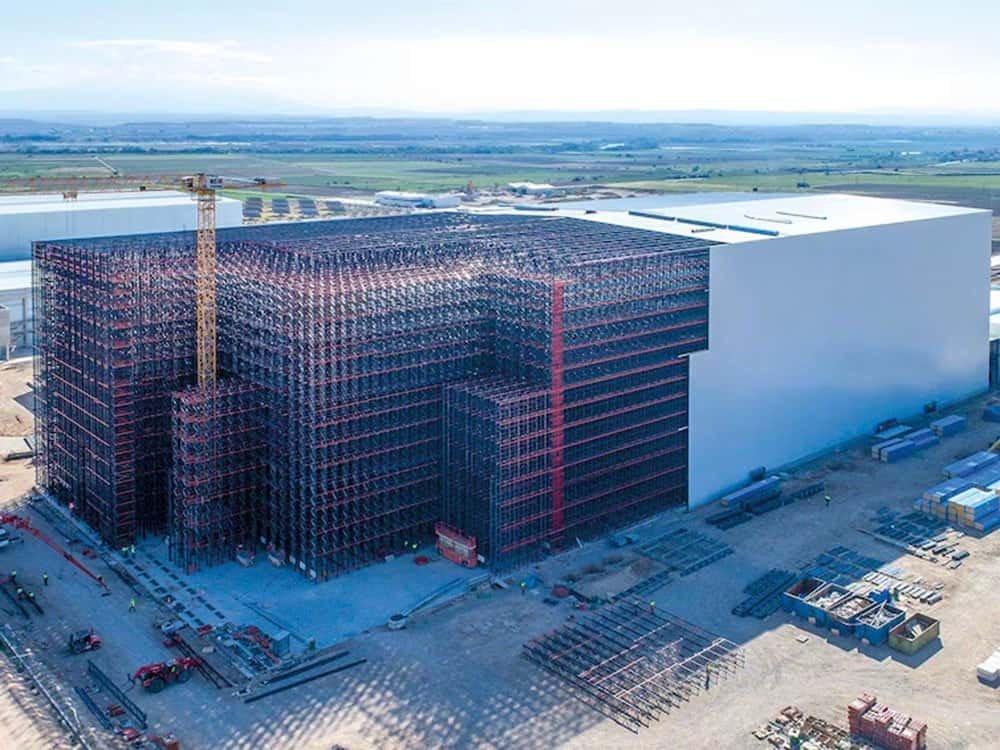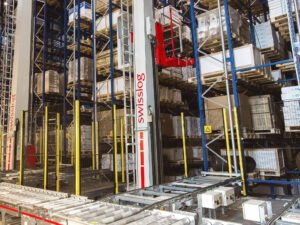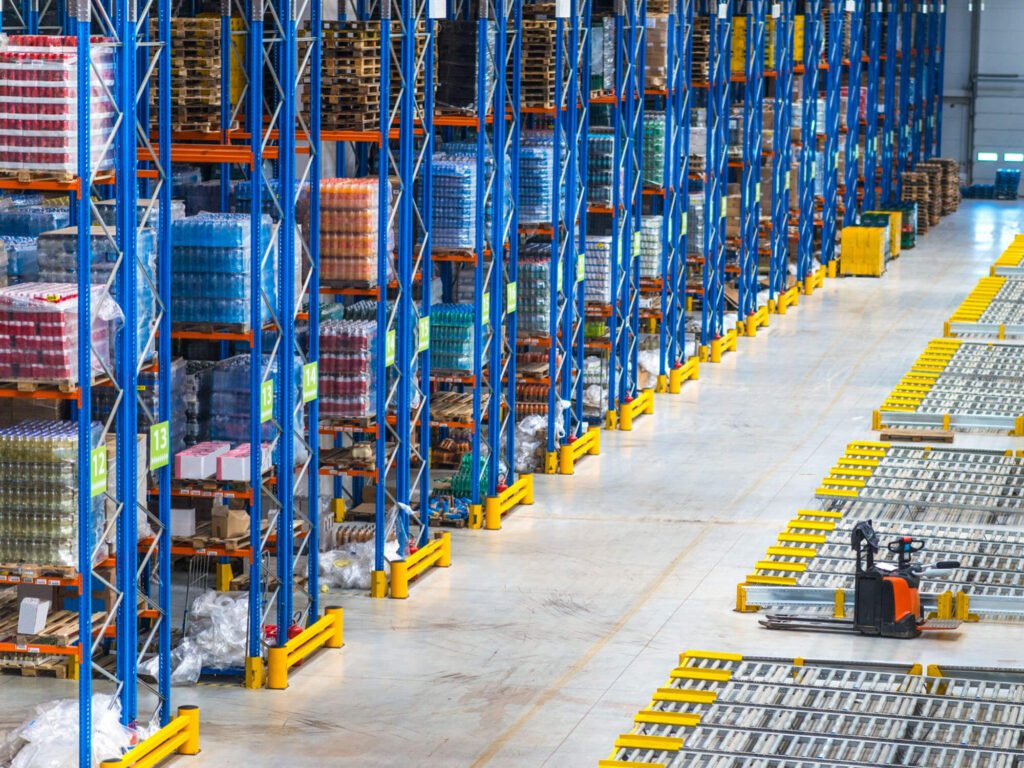Racking building systems can be the ideal choice if you consider storage to be a critical factor for your warehouse. These solutions are an innovative way to maximize your inventory capacity while improving structural design.
However, to employ them successfully, you need to do a comprehensive assessment of your existing and prospective storage requirements. If you’re interested in exploring this ground-breaking concept, keep on reading this in-depth guide.
The article will help you understand what a racking building is, where it is applicable, and how it’s able to enhance your warehouse operations. You’ll also dive deeper into how people build these creative solutions and what their estimated costs are.
Defining A Racking Building System
A racking building has many names. Some professionals call it “rack-supported building”, while others use the term “pallet-racking building”. However, these three phrases refer to the same thing, which is a kind of architecture that contains an entire racking system.
Its design is completely reliant on the pallet racks, which offer structural support for the warehouse’s walls and roof. Racking buildings are a popular concept, as they improve storage capacity by optimizing vertical space while lowering the warehouse’s physical footprint.
Racking buildings also enable firms to enhance inventory management techniques and streamline warehouse operations. Besides, there are a wide range of other benefits related to these creative structures, which you’ll go over in the next part.
Key Benefits Of Racking Buildings
There’s a reason why racking buildings are getting more popular these days. It’s surely thanks to their various benefits, which ultimately enhance your warehouse operations. The following are some key advantages of a racking building:
Maximizing Vertical Storage Capacity
Racking buildings allow businesses to store more products in a smaller area by using floor-to-ceiling storage solutions rather than depending exclusively on available floor space. This vertical extension greatly enhances total storage capacity, enabling organizations to maximize their inventory potential.
One brilliant feature is that these innovative structures provide easy scalability as your business grows. You can swiftly increase storage capacity by adding extra layers vertically or redesigning current configurations. This guarantees that racking buildings can meet shifting needs while still delivering an effective storage solution.
Reducing Upfront Expenses
Another notable benefit of racking buildings is their low upfront costs. How is that possible? Well, these pallet-racking buildings eliminate the need for separate steel construction, thereby resulting in considerable expense savings.
Instead of utilizing steel-framework components, rack-supported buildings simply support the warehouse’s structure. Thus, they need much less resources. Furthermore, their cost-saving benefit is also due to the quicker installation process when compared with traditional building processes. You’ll get to know that in the following advantage.
Speeding Up The Installation Process
By allowing for simultaneous construction of the racking system and the structure, the assembly of rack-supported buildings becomes significantly quicker. This feature helps save time and provides a smooth installation process, minimizing downtime and enabling firms to begin operation sooner.
Off-site fabrication of rack components further saves building time. Prefabricated frames, beams, and connections made under controlled circumstances help simplify on-site assembly, thereby increasing efficiency and reducing delays.
Adaptable To Various Storage Options
What makes racking buildings even greater is how versatile they are. Racking buildings work smoothly with a wide range of storage options, including very narrow-aisle pallet racks, drive-in racks, pallet flow racks, shuttle racks, and even ASRS systems.
This adaptability encourages efficient material movement, improves access to stored items, and optimizes workflow operations. Warehouse managers can capitalize on this advantage by constructing different storage zones using a number of criteria.
For instance, if your business needs temperature-controlled storage in one section, you can build racking buildings with specialized materials or insulated panels there. If you also need another zone for handling hazardous goods, it’s possible to integrate your racking pallet buildings with safety measures like fire suppression systems.
Briefly speaking, it’s simple to reconfigure, relocate, and repurpose racking buildings to meet your changing business demands.
Removing Building Columns
If you observe racking buildings closely enough, you’ll notice that these creative solutions do not have construction columns. This subtle detail allows for optimal use of space and effortless movement of stored items, employees, and material handling equipment (such as pallet jacks and forklifts) in the warehouse.
In other words, they save time and effort in handling materials by facilitating uninterrupted storage rooms. Companies can then optimize their warehouse layouts and the positioning of pallet racks without obstructing inventory lanes.
Where Can You Utilize Racking Building Systems?
Despite the wonderful benefits above, racking building systems are definitely not the one-size-fits-all solution for every situation. In certain cases, using a rack-supported building over standard steel-frame structures might not yield the best result.
Thus, to know when you can utilize racking building systems, you should carefully consider many factors, such as the ideal height for your pallet-racking building and whether you’ll need to modify the building’s configuration over its lifetime.
Remember that racking buildings are ideal when you need to maximize your storage density but don’t have enough footprint. Plus, you should only use them for storage. If warehouse operations involve other activities like manufacturing, then racking buildings may not be the best solution.
In the below parts, you’ll get to know how businesses and inventory facilities are utilizing racking buildings in real life:
E-Commerce Warehouses
The e-commerce business requires efficient storage and order fulfillment to meet customers’ diverse demands. Racking buildings can help with that requirement by providing quick access and retrieval throughout the selecting and packaging processes.
Moreover, they need fewer aisles and work well with various automated components like ASRS systems, conveyor belts, AVGs, and order picker robots. This is particularly useful for e-commerce warehouses with a limited footprint that must handle a large number of products.
Cold Storage Warehouses
Besides e-commerce facilities, racking buildings are also perfect for cold storage warehouses that need high inventory capacity and precise climate control for medicines and perishable items.
Furthermore, rack-supported buildings can include insulation panels, HVAC systems, and other specialized devices to produce a climate-controlled environment. This setup offers precise temperature control, thus protecting the integrity and quality of sensitive products throughout their inventory life.
F&B Warehouses
Many F&B warehouses trust racking buildings, as these structures can help maintain product freshness and facilitate compliance with food safety regulations. They promote optimal product rotation, reduce waste, and preserve food quality via effective inventory solutions.
Some of the solutions include temperature control, proper ventilation, and FIFO flow. These design options provide appropriate inventory conditions to make sure your stored items are safe and sound during their stays in warehouses.
Building Materials Warehouses
Another instance where you’ll likely find racking buildings is in drive-through building material warehouses. By providing convenient access for forklifts and other loading and unloading equipment, these solutions simplify handling procedures and lower processing time.
These pallet-racking buildings are also capable of holding many building material types, such as timber, pipes, and steel beams. They help increase throughput by arranging goods in a systematic, accessible way, ensuring that a wide range of building materials are immediately available for use.
Exploring The Construction Of A Racking Building
There are a lot of criteria and factors to keep in mind during the design and construction of a racking building. Some of them include the racking structure, upright frames, beams, connectors, wall and roofing systems, and other safety measures. Let’s look at how people assemble a racking building via the following three steps:
Step 1: Evaluating The Installation Site
The first and most important step in constructing a racking building is to thoroughly assess the installation spot in your warehouse. The installation process begins with the selection of a suitable location. Then, develop a detailed plan for the racking building in consultation with experts and architects.
One of the best practices here is to pick a concrete floor, as it provides a solid base and support for the racking building. Make sure it is even, so that your structure can stay balanced, preventing warehouse accidents. You can consider utilizing reinforcement bars to further enhance the concrete floor’s strength.
Step 2: Assembling The Racking Building
There are numerous steps and phases to go through for a rack-supported building to be properly constructed. For instance, beams, columns, and trusses must be securely fastened and connected in accordance with technical specifications and safety standards.
To do that, workers need to carefully align horizontal beams over upright frames at the appropriate height. This step ensures the beams can fulfill their role in evenly distributing the cargo weight, thereby increasing the structure’s stability.
Once the racking building is in place, it’s time to install the roof panels and walls to complete the solution’s enclosure. This phase demands quite a few resources, from insulated panels and concrete to metal and other materials.
Step 3: Finalizing The Installation
The final phase is to add certain utilities and finishing touches to the racking building. It includes the installation of cables, lighting fixtures, and other electrical components essential for electrical system integration. Some cases even require plumbing infrastructure, such as water supply lines and drainage.
In addition, fire safety is crucial in pallet-racking buildings. Make sure you add sprinklers and fire alarms to detect and respond to potential fire hazards. Security protocols like CCTV cameras, access management solutions, and perimeter fences are also needed to protect the racking building and the stored items there.
One last essential step is to conduct final inspections following the installation. This helps ensure that all building codes and safety regulations are compliant. Plus, don’t forget to finalize the building with proper painting, carpets, and signage, as they can further improve the functionality of your newly installed structure.
Racking Buildings Vs Steel-Frame Buildings
Now that you know all the basics about racking buildings, it’s essential to dive deeper by comparing this innovative concept with other similar structures. Let’s begin with the differences between racking buildings and steel-frame buildings.
Construction Process
The assembly of racking buildings begins with the pouring of concrete slabs, followed by the erection of the racking system. Workers often construct many frames on the ground before standing them up, making alignment simpler and more accurate. Walls and roofs are put up last to maximize space in congested storage conditions.
On the other hand, building steel-frame structures starts with the foundation and then the structural steel-framework. Roof decks and siding are installed next, and the concrete slab is set up last. The racking system is only erected after all of that, which often causes issues with space and height limits.
Construction Time
In terms of construction time, pallet-racking buildings are superior. The simultaneous assembly of the structure and racking system shortens the total construction time. These innovative buildings also allow for the proper arrangement of racks, which increases storage capacity.
However, their steel-frame counterparts need a more sequential approach to build, which lengthens the construction time. This drawback may result in underutilized inventory owing to access and height limits during racking construction.
Versatility
Compared with steel-frame constructions, rack-supported buildings provide more flexibility for future upgrades. In other words, as company requirements evolve, it’s easier to reconfigure or enlarge racking buildings.
Regarding steel-frame buildings, due to their stiff structure, adjustments and renovations are the real challenge, which is only possible with a huge amount of capital and human efforts.
Space Utilization
With racking buildings, businesses can store more items in the same area, as these architectures optimize vertical space utilization, making them ideal for high-density storage.
Steel-frame structures may not use vertical space as effectively, particularly if the racking system installation has spatial constraints.
Racking Buildings Vs Rack-Supported Structures
Most people often treat these two terms, racking buildings and rack-supported structures, as one and use them interchangeably. This mix-up is primarily due to the reliance on racking as the key structural component of both types. Yet, there are important distinctions between the two. Let’s unveil their differences in this section.
Racking buildings are entirely enclosed with walls and roofs providing complete environmental protection. This characteristic makes them well-suited for a variety of warehouse applications that require security and climate control.
On the other hand, rack-supported structures often lack certain architectural elements, such as walls. For example, a T-shed rack-supported structure utilizes cantilever racks as an alternative to covered yard storage. They comprise a core column that supports steel extending arms to protect items without completely enclosing them.
Therefore, rack-supported structures are a cost-effective option for outdoor storage where certain exposure to environmental conditions (like sunshine and rain) is acceptable.
Primary Factors Affecting Racking Building Cost
When choosing a racking building for your warehouse, you will encounter various aspects that impact its total cost. Understanding these elements is critical for companies to make sound choices and maximize their investment.
- Design: The first factor influencing a racking building’s cost is its design. This includes the building size, load-bearing capacity, seismic constraints, and automated system integration. Customized features to fit your unique operating demands may further raise the total expenditure.
- Racking characteristics: Another significant cost factor relates to your racking systems, especially their kind, height, and load capacity. Choosing the ideal racking solution can improve efficiency but also increase upfront costs. And if you include additional features like pallet rack decking, safety equipment, and automation, you’ll need to prepare a larger budget.
- Site preparation: Depending on the complexity of your designated installation location and the required amount of groundwork, your racking building cost can vary. Thus, in order to optimize your expenses, you’ll need to properly examine this set of factors, including site accessibility and closeness to utilities.
- Racking materials: The materials utilized to assemble the racking building also have an influence on the project’s overall cost. In addition to the chosen materials (steel, concrete, and metal), their quantity, quality, and other special needs to help maintain structural integrity also impact the final price.
- Stored items: Of course, the cost estimation will be incomplete if you forget to consider your stored products. Heavy or bulky items need sturdier, more robust racks, which raises installation costs. Custom components designed to meet unique storage requirements also boost total expenses.
- Upkeep and maintenance: One last factor to consider is routine maintenance, repairs, and any prospective expansions or reconfigurations. Certain racking building elements will need replacement due to deterioration over time, with the cost varying depending on the exact design and materials used.
Conclusion
To summarize, racking building systems represent the future of industrial storage by providing new solutions that optimize efficiency and flexibility. They are suitable for a wide range of applications, including e-commerce, cold storage, and F&B warehouses.
Hopefully, this article has provided you with essential information about racking buildings, from the construction method to their estimated price tag. Learning about this innovative concept will definitely help you make more educated choices when considering this solution for your warehouses in the future.




